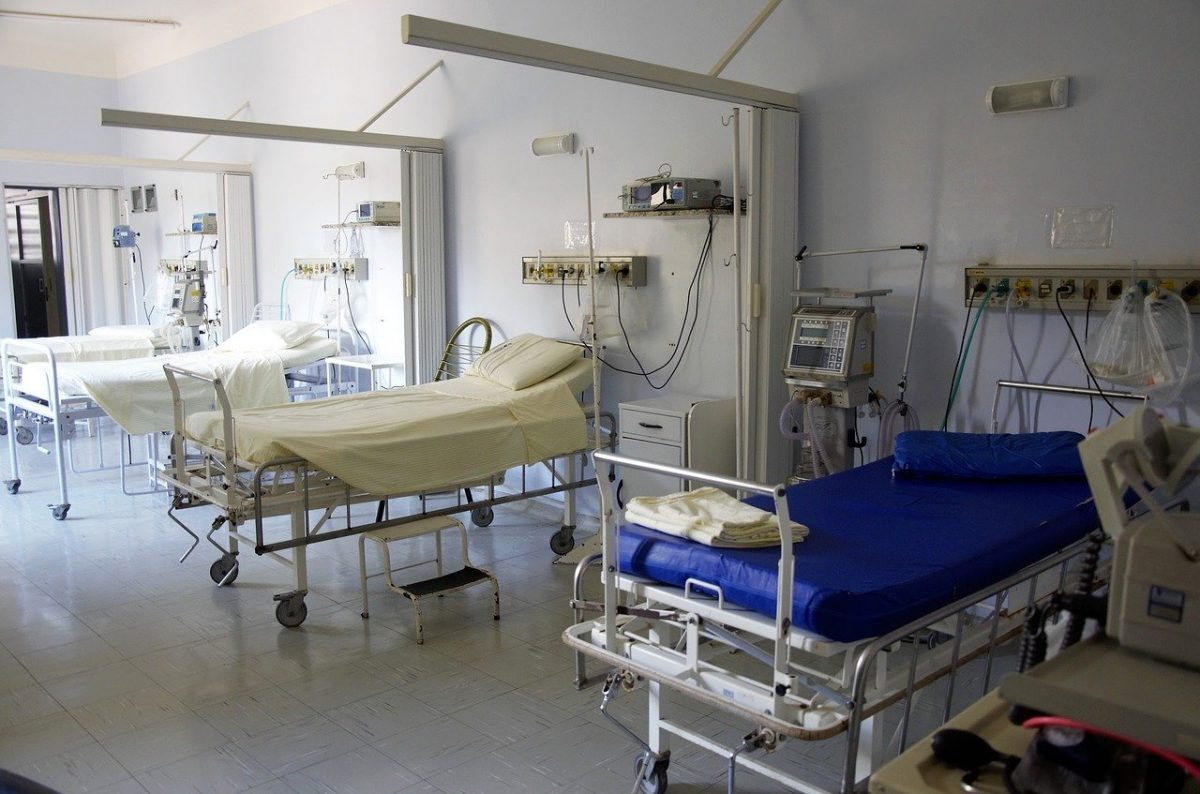Hospitals and other medical facilities are places where we often go to get relief from illness, but this relief can be achieved only when the environment is clean and sanitary. A dirty hospital will make you sick with icky bacteria, so hospitals must maintain a high level of cleanliness at all times!
1. Bacteria and Viruses
Bacteria and viruses can be contracted from all kinds of surfaces like doorknobs, countertops, mobile carts, and bed rails. Thus, workers need to sanitize the hospital surface as often as possible. Mobile patients should also be given hand sanitizers and nurses should use the best quality cleaning wipes that contain alcohol to stay sanitary all of the time and to clean surfaces near them, especially the surfaces they have touched. This is necessary because nurses and doctors handle hundreds of patients daily, so they may spread germs to the next patient without even knowing.
Hospital bacteria are often so dangerous that they can lead to fatal infections. To prevent this, hospitals must always maintain a high level of cleanliness by disinfecting bedside tables, telephones, countertops, and anything else the patients come in contact with. Regular cleaning schedules should be established each day, including sanitizing mobile carts, doorknobs, toilets, and countertops around patients’ bedsides just before they are touched. Fortunately, it only takes one minute per patient room to disinfect all surfaces using environmentally-friendly EPA-approved hydrogen peroxide cleaners to kill 99 percent of viruses and bacteria.
Today, hospitals sterilize objects and surfaces using dry heat, steam under pressure, liquid chemicals, and hydrogen peroxide gas plasma. These sterilization methods kill bacteria and viruses on instruments and devices used in medical treatments.
In dry heat sterilization, an object is exposed to heat at 170 degrees Celsius (338 degrees Fahrenheit) under normal air pressure for about an hour. This process kills most resistant spores by oxidizing their cellular components.
Steam under pressure uses moist heat or saturated steam to kill microbes. A good example of a steam-under-pressure device is an autoclave used in sterilizing surgical instruments.
On the other hand, hydrogen peroxide sterilization is used for heat-sensitive devices. Radiofrequency generates an electrical field applied to a chamber to produce plasma, which destroys microbes.
2. Colds and Flu
People that visit hospital facilities are often already sick or on their way to getting sick because colds and the flu spread rapidly in closed areas like hospitals where many people are not able to wash their hands frequently enough. For example, if one patient shares his food with another patient after touching his nose or mouth without washing his hands first, he has just transmitted germs to someone else who will also begin coughing and sneezing uncontrollably all over other patients! Thus, it is especially important to stay clean and wash your hands often to avoid getting sick during a hospital visit.
3. Soiled Hospital Beds
Soiled hospital beds pose a tremendous risk for patients who are weak and already ill. Instead of getting better, the patient is likely to catch another kind of illness or even die due to the bacteria present in soiled hospital beds. Hospital staff need to frequently change bed linens, wash their hands before touching patients, and keep contaminated surfaces clean. This will help prevent cross-contamination between patients as well.
4. Microbiological Contamination
When you think of a hospital room, what comes to your mind? Most people think of the typical white walls and surroundings, with a patient in a gown hooked up to numerous machines through intravenous lines or even breathing tubes. These rooms are isolated for a reason: to prevent microbial contamination from other patients! If another person’s illness is contagious, it can easily spread by being close together. Keeping these rooms sparkling clean will help avoid another person getting the same illness during their stay. Keeping all surfaces in hospitals free from germs is necessary to ensure that patients do not contract new illnesses when they arrive at the hospital already ill from their diseases.
A reputable hospital always undergoes regular disinfection and sterilization to keep contaminants from spreading. Healthcare facilities of all types do the same, disinfecting objects, tools, and surfaces with safe cleaning solutions. Those that get the most handling will need the best ones to truly maintain sanitation standards.
Disinfectants are categorized into chemical sterilants and low-level, intermediate, and high-level disinfectants.
Chemical sterilants kill spores within three to 12 hours of exposure. Meanwhile, low-level disinfectants eliminate vegetative bacteria and certain viruses and fungi in 10 minutes or less. On the other hand, intermediate-level disinfectants kill vegetative bacteria and most fungi and viruses without eliminating spores. Above them, high-level disinfectants kill all contaminants except large spores.
5. Reduction in Re-Hospitalization
Keeping the hospital clean will ensure that current patients are not re-hospitalized for contracting another illness. This can be caused by another patient who is unknowingly shedding pathogens into the environment, or due to a worker’s negligence in cleaning up after themselves! Since one of the hospitals’ top priorities must be to keep their patients alive and healthy, taking measures to maintain a high level of cleanliness at all times should be taken quite seriously.
6. Protection of Patients, Visitors, and Employees
Everyone who steps inside a hospital should feel safe from dirt, germs, viruses, bacteria, etc. Sure there are some precautions you can take while walking through the halls (wearing face masks to avoid breathing in other people’s illnesses), but regardless of these efforts, hospitals and healthcare facilities should be clean at all times regardless. Hospitals do not want their patients to suffer any longer, and they also do not want visitors or employees to feel uncomfortable due to poor sanitary conditions. Both the hospital and its visitors/employees benefit from maintaining high levels of cleanliness at all times!
If you think about it, hospitals are more like a hotel room than an actual home because people go there expecting a certain level of comfort and relief from illness. Keeping things as tidy as possible is always the best way to go with keeping a place comfortable for those who need medical attention. Who knows how many hospital visits could be avoided if proper measures were taken in removing dangerous germs from the environment.



